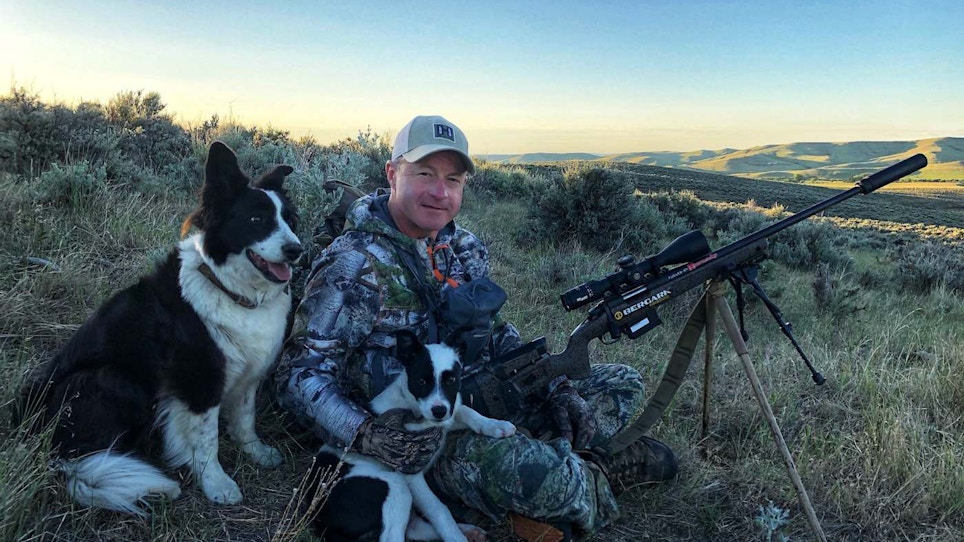Summertime coyote hunting can be exciting due to the enthusiasm of coyote parents and pups alike. It’s the time of year when tolling with a dog is at its height of effectiveness. It’s also a time to start a new pup down the road to be a good coyote hunting partner during any season. That’s been my No. 1 job this summer.
Our current family dog and my go-to coyote hunting partner, Sage, is starting to show some age. To make sure there was no gap between dogs, our family agreed to add another border collie to the society. Sully, a male, smooth-haired border collie, came home in early June.
Like Sage, I wanted Sully to be an all-around outdoor dog. Sage scouts with me, hunts nearly everything with me, looks for shed antlers and of course, teases coyotes. That’s the basic job description I had for Sully with his arrival. To jumpstart his path to outdoor adventure we started him on a stringent training session. This system worked on Sage and Sully is starting to shine in his comprehension of the English language.
Training began immediately with the basics that make any dog great. In addition to sit, come and stay, I added down into the commands. It’s a good way to make a jittery dog lay down and while coyote hunting, I’ve had numerous situations where I wanted Sage to be nearly flat. On several occasions I made her lay down beside my pack as I stalked coyotes we spotted. Using down and stay was the trick. Sully’s training quickly advanced with the help of hot dog sections as treats. I can’t recommend a better way to have a dog learn the English language in such an eager manner.
Simultaneously, I stressed bonding. I feel it is important to have your hunting partner focus on you and trust in you. It worked for Sage, so I’ve been making sure Sully looks to me for all support and help. Instead of putting Sully in a kennel or leaving him at home while I ran errands, I bring him everywhere. He sleeps in a bed in my office at nap time. He sits beside me in the truck while running errands and he’s learning to stay put on the ATV while we scout. When he gets tired while hiking, I plop him in a backpack or on my shoulders for an Uber lift.
It wasn’t long before he was introduced to firearms. There are volumes written on how to ensure your hunting dog doesn’t acquire a gun-shy attitude. My training was routinely basic by first introducing him to air rifles and then suppressed firearms at a distance while moving closer. That premise continued to larger calibers. The other day my son was shooting trap in the pasture and Sully was eager to join. I had to make him stay to overcome his exuberance.
The coyote hunting aspect should come naturally. He’s already eager to look for trouble when I tell him to “get em!” It’s the same phrase I use for Sage and the two are starting to team as a hunting pair. I’m hoping he’ll take his lead from Sage in the field. That’s what he did the other morning on a practice setup. The coyotes answered way in the distance, but wouldn’t commit. Regardless, Sage loped around in front as a visual tease and Sully joined her. He heard all the vocalizations and although the distress calls were a bit scary, he loves the howling.
In fact, the other morning at daybreak two coyotes lit up as Sully and I were outside starting chores. Unbeknownst to me, Sage was in the horse pasture irritating a pair of coyotes who commenced the howling. Sully sat down and began to whine in anticipation.
I think he’s going to have a good future as a coyote dog and all-around outdoor partner.






